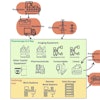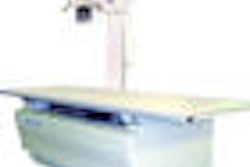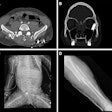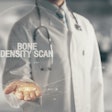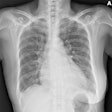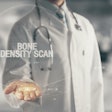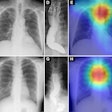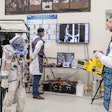SEATTLE - CT perfusion imaging with a 64-slice scanner is highly useful in evaluating patients with acute stroke, detecting abnormalities in nearly a third of patients in whom no occlusion is identified on conventional CT angiography (CTA), researchers reported at the 2009 American Academy of Neurology (AAN) meeting.
"This technology [CT perfusion (CTP)] is readily available in most hospitals and is extremely useful, especially if you think a patient can benefit from tPA. It can help you to triage patients and assess the risk of complications, all within five to 10 minutes," said lead investigator Dr. David Tong, director of the California Pacific Medical Center Stroke Research Center in San Francisco.
For the study, the researchers reviewed their experience with CTP/CTA in 70 patients with acute neurological symptoms who arrived at their center within six hours of symptom onset. Patients were examined with a 64-slice CT scanner (LightSpeed VCT XT, GE Healthcare, Chalfont St. Giles, U.K.).
Patients with cerebral hemorrhage were excluded, and follow-up MRI was routinely performed when clinically appropriate. The mean age of the patients, who were imaged between May 2006 and July 2007, was 70 years. Thirty-five patients (50%) were diagnosed with stroke and 12 patients (17%) were diagnosed with transient ischemic attacks (TIAs).
The median National Institutes of Health Stroke Scale (NIHSS) score of stroke patients in the study was 12 points.
CT perfusion detected reduced perfusion in 25 of 31 (80%) acute stroke patients and in two of 11 (18%) TIA patients.
Among patients who received an MRI scan with a diffusion-weighted imaging protocol, the scans were negative in two of four (50%) stroke patients who also had a negative CT perfusion study. The median NIHSS score was 3.5 points in these cases, and outcome was excellent with no major neurological sequelae on follow-up.
Twenty of 22 (91%) patients who had not suffered a stroke or TIA had negative CTP/CTA findings and experienced a good outcome, Tong said. CT perfusion revealed abnormalities in two of 22 (9%) nonstroke/TIA patients. Additionally, CTP revealed focal hypoperfusion in one of four (25%) seizure patients, and elevated perfusion in one brain tumor patient.
None of the patients with negative CTP/CTA findings experienced subsequent strokes or deterioration within the following 48 hours. Eighteen patients received tPA, four via the intra-arterial route.
"Importantly, CTP predicts successful thrombolysis without large artery occlusion," Tong said. CT perfusion detected abnormalities in eight of 25 (32%) patients with acute stroke in whom CTA was negative. Four of these patients received tPA, two via the intra-arterial route, and three of the four (75%) had good outcomes, he said.
The 64-slice scanner "provides twice as much brain coverage as older models. In addition, brain coverage can be enhanced by the use of the toggle table technique. The scanner shifts, 4 cm back and forth, so you can get a picture that is 8 cm across," Tong said.
Despite its greater brain coverage, "you still have only 75% to 80% brain coverage, so you can miss some lesions. But the neurologist can usually tell you where to localize the shoot," he said.
"With the newest scanners, you can get the whole brain," he added.
Additionally, lesions less than 1 cm "are harder to detect as the resolution of the detector is about that size," Tong said. However, most of these patients do not experience significant deficits.
"The MRI is more sensitive, but it's not available 24/7 at many places. Also, it is much more impractical as stroke patients have trouble staying still," he said.
By Charlene Laino
AuntMinnie.com contributing writer
April 30, 2009
Related Reading
Stroke scan decision vexes doctors, April 24, 2009
CT perfusion scan spots acute stroke in the emergency setting, November 5, 2008
Copyright © 2009 AuntMinnie.com



